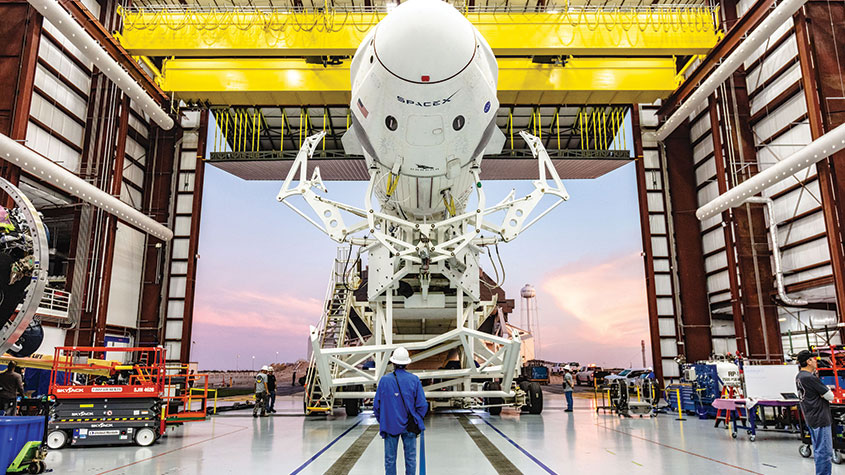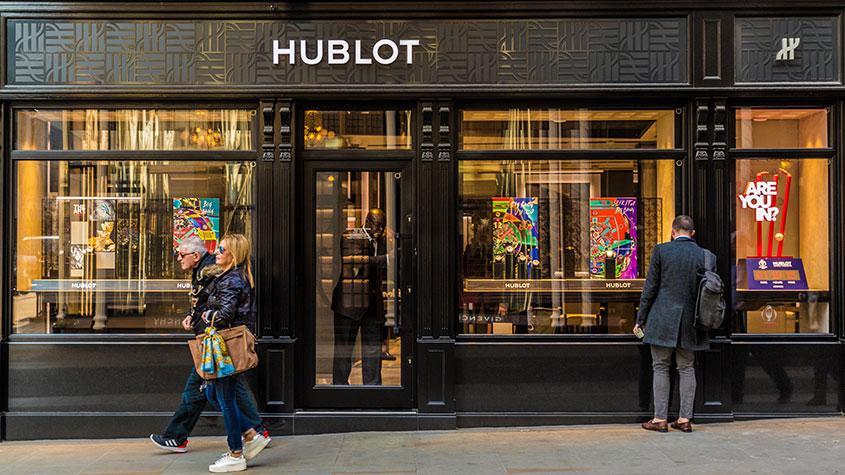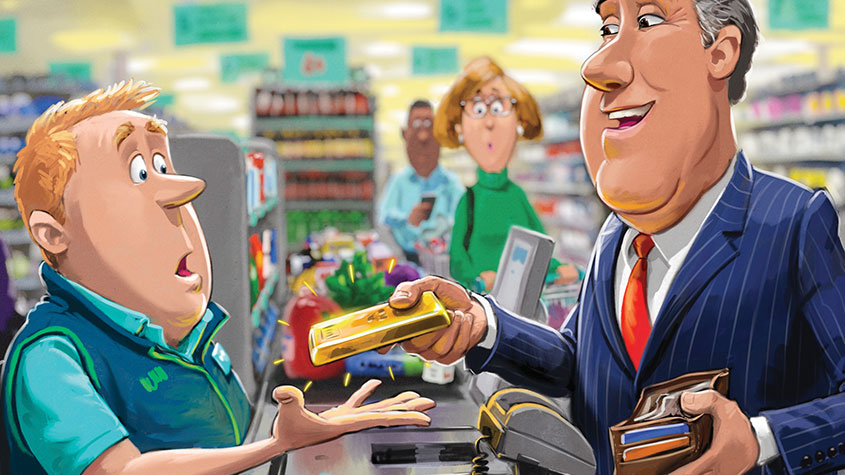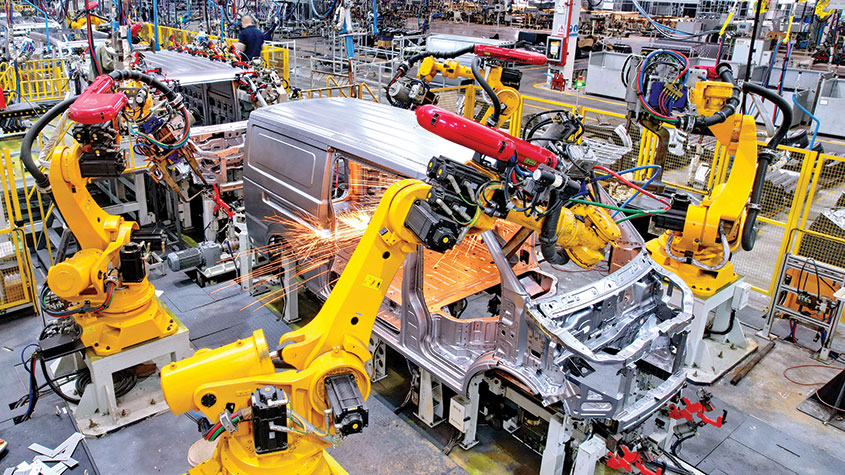Find your fortune on the farm
As a formidable bull market engulfs agricultural land, firms supplying farm equipment, seeds and sprays are set to soar. Jonathan Compton tips the best stocks to profit.

As a formidable bull market engulfs agricultural land, firms supplying farm equipment, seeds and sprays are set to soar, says Jonathan Compton.
Right now, one of the greatest global bull markets ever seen is taking place right under our noses. Yet it is rarely covered by analysts, or recommended by financial advisors. I'm talking about agricultural land.
For 40 years, until the mid-1990s, global farmland prices were moribund, or even falling in real' (after inflation) terms. Yet since 2000, of the 120-odd countries publishing reasonable data, even the losers' have seen prices more than double in US dollar terms. That's before considering any income.
MoneyWeek
Subscribe to MoneyWeek today and get your first six magazine issues absolutely FREE

Sign up to Money Morning
Don't miss the latest investment and personal finances news, market analysis, plus money-saving tips with our free twice-daily newsletter
Don't miss the latest investment and personal finances news, market analysis, plus money-saving tips with our free twice-daily newsletter
The key benchmark is arable land, where gains have been spectacular. From 2000 to 2010, the global index for arable land rose by more than 400% again before income. Prices are still rising. Some national and regional gains have been eye-watering: Brazil went from $800per hectare (2.5 acres) to $5,200.
In Poland, Hungary and the Baltics prices rose by 1,050%, while Romania's are up 1,187% (with 172% of that following its European Union accession in 2007).
In America, prices in key grain states, such as Iowa, have soared from $4,640 in 2000 to $21,800 today. Even countries with bankrupt governments have gained: Argentina is up 840%; Zimbabwean land prices have tripled.
The UK is no slouch either. Prices for better-quality arable land in the south and east have raced from around $8,700 per hectare in 2000 to over $30,000 in 2012 (£2,100 per acre to £8,500). Even the 2008 crash could not stop the boom.
Prices in the hardest-hit countries, such as Spain and Ireland, fell by up to a quarter, but have since risen to new highs. Elsewhere, in provinces such as Groningen in the Netherlands orNorth Rhine-Westphalia in Germany, $80,000 buys you just a single hectare.
What's behind this staggering rise?
Can this growth be put down to food prices? The most important agricultural commodity is wheat. Generally the world grows slightly more maize and rice, but wheat is grown on a greater area than any other commercial food, and world trade in wheat is greater than for all other crops combined.
It is the top source of vegetable protein in food for humans. It is often used as a forage crop for livestock. And it provides the straw for bricks and thatch.
The wheat price (and that of other cereals) has roughly doubled this century, spiking recently to over £175 per tonne on fears of lower exports from Russia and the Ukraine (the fifth and sixth biggest exporters in the world respectively).
Yet these increases have lagged land prices. The reality is that while farmers have grown much wealthier on paper, current farm incomes will not put caviar on the table. In real terms, the price of food globally has never been cheaper, nor has it ever accounted for a lower percentage of average income.
The data is notoriously unreliable, but the best estimate is that British cereal farmers made less profit in 2012/2013 than in 2011 or 2008. If you strip out other business, such as holiday lets or farm shops, the average farmer earned less than the UK median of £517 a week.
Part of the problem is that the average UK farm is still too small at 135 acres but that's still the fourth largest in the EU, where the average farmer has a mere 32 acres. (Top is the Czech Republic at 222 acres, then Denmark and tiny Luxembourg.)
So what has driven prices higher? One factor is that by the mid-1990s, land was simply too cheap, so a period of catch-up began. But this coincided with rapid growth in income per head in developing countries, especially Asia.
Rising income drove a desire for more and better food, especially meat. That put huge pressure on grain supplies: beef cattle, sheep, pigs and poultry are inefficient grain-conversion machines on legs.
Even on the best cattle and sheep farms, it takes 6lbs of feed grass, silage and grain to make a single pound of beef or lamb, or around 3.5lbs and 2.5lbs for pigs and chickens respectively. So it's not so much the price as the quantity of food needed that has driven demandfor farmland.
Obesity and malnutrition
There's no sign of this trend slowing. In poorer countries food bills still absorb over a third of income (versus an average of 5% in advanced nations). Yet as wealth grows, so will demand for food. Even in India, where the majority are vegetarian, meat consumption is soaring. And despite the cow being considered sacred in India, the country is set to overtake America as the world's top beef exporter.
Greed is a key force behind higher land prices. The UN Food and Agriculture Organization (FAO) reckons the typical person needs 1,800 kilocalories (kcals) a day. Yet the world's tubby heavyweights Americans, Austrians, Greeks, Irish and Portuguese consume about twice that figure, at 3,600-3,900 kcals per day.
Developing nations are catching up. China and Brazil consume 3,200 and 3,000 respectively, an increase of more than 800 kcals in 15 years. Even countries once blighted by famine are now well over the threshold: Ethiopia averages 2,000 a head versus 1,500 in 1990.
Western overeating has spread so rapidly that in 2004 Shanghai City Council found that the average middle-class child was chunkier than his American counterpart, an ironic and unintended consequence of the one child' policy four grandparents force-feeding their single heir.
Globally, obesity is out of control. More people now die of overeating than of malnutrition, says the FAO. Despite the clich of the Fat American', the US lags others in the WPI (World Porky Index).
In Mexico a third of adults are clinically obese. Kuwait and Barbados are worse. But the island nation of Nauru remains the cup holder, with a 71% obesity rate and an average weight nearly twice that of a Bangladeshi. This is all putting a huge strain on food supplies, and will only worsen as poorer countries develop.
So far, we've kept up with this demand growth. In 1798, economist Thomas Malthus noted that the population was growing far faster than food supplies. He predicted mass starvation and the collapse of civilisation. It did not happen: major advances in agriculture were starting even as he wrote his theory.
In 1945, the average wheat yield per acre in the UK was just under half a tonne; now 2.5 is the floor. In the developed world, cereal and vegetable yields per acre have risen by over 140% since 1960, exceeding the 130% rise in the world's population from three to seven billion people.
Yet there are many costs. One is desertification' the destruction of productive land. Since 1990 the world has been losing six million acres a year through poor land management. That's before considering land lost to urban and industrial development. Beijing's toxic smog is as much the function of sand storms as industrial pollution.
In just 20 years land degradation has allowed the country's western desert to expand by 100 miles. Soon it will reach the suburbs. So-called solutions to lost land have often made things worse. Cutting down forests to free up new farmland inevitably causes soil erosion and flooding.
Paranoia and government policies
Another factor driving up land and food prices is government paranoia. A steady supply of food isn't enough, the supply must also be secure. In Europe, shortages in two world wars have resulted in a core commitment to food security.
While EU farm subsidies are being slowly rolled back, 40% of all EU spending still goes to farming via the Common Agricultural Policy. Its costs and corruption are regularly exposed, yet large direct payments to farmers continue.
Merely owning or renting land in the Netherlands secures from €418 per hectare. In France, farmers get €283, in the UK €224, and €182 in Romania. There have been three net effects.
Land prices have risen because these payments significantly offset borrowing costs. Unwanted crops have been grown. And food prices have risen estimates suggest these subsidies add £450 a year to the food bill for a family of four in the UK.
It's not just Europe. America is the world's leading food grower and exporter, yet offers a range of often even more insane subsidies. The government has a target of 35 billion gallons a year of subsidised green' ethanol production by 2017, as a petrol and oil additive in car engines and home heating.
The most efficient source of ethanol is sugar, of which Brazil, an ethanol pioneer, has abundant oversupply. Yet America switched to far more expensive maize (corn) ethanol for fear of Brazil's political reliability.
Last year, America planted nearly 97 million acres of corn an area greater than the whole of Germany. Of this, 25% was for ethanol production, reducing the space for other crops.
Asia too is concerned about food security. Its leadership in global manufacturing depends on friendly farmers in developed countries to feed its people. Only a sixth of China's land is cultivatable. It has 7.5% of the world's arable land to feed 19% of the world's population.
North Asian and other governments have embarked on land grabs. This hit headlines in 2008, when South Korea's Daewoo (with government aid) bought a 99-year lease for half of Madagascar's arable land (later struck down by a new Madagascan government).
Disasters and fund managers
Then there's the ever-present threat from nature. Iceland claims that it caused' the French Revolution. In 1784, the Laki volcano in southern Iceland erupted, killing a quarter of the population. The ash cloud covered Western Europe.For three years, crops failed and winters were exceptionally cold. Starvation and revolution followed.
Leaving aside such disasters, weather patterns are changing rapidly, as is the all-important El Nio (a change in ocean temperatures that affects global weather patterns).Debates rage over the reasons, but the impact on food production will be negative.
Animals and plants adapt slowly. The outlook for the 2014 cereal crop is deteriorating. Drought and record low temperatures in America mean that in key wheat states, such as Kansas, the percentage of the crop in good condition is the fifth-lowest on record. Much of Brazil and western Russia are also suffering drought.
China's likely cereal yields this year already look poor. Bad harvests in 2008 caused a surge in food prices, political panic and social unrest. 2014 could be an encore. One or more are assured in the next five years.
So the fundamentals are in place for the bull market to continue. Farmland may no longer be cheap, but it still yields 2% to 3% given many government bonds and deposits yield the same or less, you could argue that valuations' look reasonable.
But this ignores the main cause that turns all bull markets into bubbles, as will soon begin in farmland the behaviour of banks and institutional investors. Lenders always favour businesses where prices have been rising for a while and are under-borrowed. This perfectly describes farmland.
Until recently, credit to invest in or buy farmland was almost unobtainable. Bankers are now hunting eagerly for borrowers, offering generous terms.
Meanwhile, insurance firms and pension funds have not participated at all in the world's greatest, and now longest-lived, bull market in any asset class. This is particularly embarrassing given that until the late 1980s, they were the largest agricultural land owners (especially in the UK). Most now own none whatsoever.
Any analyst can load a spreadsheet to make a business seem great value. Put in a wheat price of £250 a tonne and cut diesel prices for 2019 (not a forecast) and farmland looks a steal. It is a matter of time before institutional buyers return and that's when prices will really take off.
Three farming stocks to buy now
Most of the best farming and agribusinesses are private, which perhaps proves how profitable they are: why list if the return on equity is so high?
If you have a spare £3m down the back of the sofa, then buy a 350-acre arable farm in the UK, contract out the farming and agree a profit share. That way you keep the EU grants and can use the other benefits, such as inheritance tax exemption and very favourable VAT treatment.
Overseas farms are often cheaper, sometimes for good reason. The best value is in Latin America, especially Argentina and Paraguay. Much of France is surprisingly cheap, but legal and transaction costs can be high.
A useful rule of thumb is to avoid investing in animals (disease); vineyards (oversupply); and all Russian Federation countries (weak land rights). For £1m, you'll get a nice compact wood in many EU countries and in Canada.It is generally better to plant rather than buy, as large grants tend to be givenout at the initial planting stage.
There are some farmland funds, often owning a combination of land, listed companies, debt and agribusinesses; in short, hybrids. None particularly inspire, and management and third party costs can erode shareholder returns. So for most investors the question is: which companies to buy?
The listed agriculture sector is consolidated. A handful of larger companies dominate each sub-sector, which provides some profit margin protection in a highly cyclical industry. But do remember that if grain prices fall, so will most agri-related share prices, even if earnings are soaring.

Fields have to be ploughed and harvested. In farm equipment, AGCO Corporation (NYSE: AGCO) is a better bet than the more domestically orientated and larger Deere (NYSE: DE). Its main business (two thirds of sales) is building tractors of all sizes in plants around the world.Brands include Massey Ferguson and Challenger.
It also makes other equipment, such as combine harvesters. AGCO is the top provider in Latin America and Eastern Europe, with a good presence in Asia. On a price/earnings (p/e) multiple of nine, trading at 1.3 times book value and with little debt, it is cheap.
Good-quality seeds and sprays are crucial for improving crop yields. In 2000, Syngenta (Switzerland: SYNN) was created via the merger, then listing, of the agricultural businesses of Novartis and AstraZeneca, making it the first global groupto focus exclusively on agribusiness.
There are two main areas: crop protection including herbicides, insecticides and fungicides and seeds for field crops such as oil seeds, cereals and sugar beet. Syngenta and America's Monsanto (demonised in Europe for forcing Frankenstein crops onto the public') dominate these businesses, but the former has been better run and has yet to miss its sometimes aggressive targets. Bayer has a strong agricultural unit, but this is diluted by its other interests.
Fertilisers are also key to growing crops; there are several players but one of the largest, Yara International ASA (Oslo: YAR) looks the best of them.
Based in Norway, it is another global player and turns energy (usually gas, where it has aprice advantage), natural minerals and nitrogen from theair into products for farmers and industrial customers.These include ammonia, nitrates, nitrogen, phosphorous and potassium. On a near-4% yield and a p/e of 12, the valuation is hardly stretched.
Jonathan Compton was until recently MD at Bedlam Asset Management and has spent 30 years in fund management, stockbroking and corporate finance.
Get the latest financial news, insights and expert analysis from our award-winning MoneyWeek team, to help you understand what really matters when it comes to your finances.
Jonathan Compton was MD at Bedlam Asset Management and has spent 30 years in fund management, stockbroking and corporate finance.
-
 Zoopla: house price growth stalled in 2025 but forecasts for 1.5% higher next year
Zoopla: house price growth stalled in 2025 but forecasts for 1.5% higher next yearSales soared this year with more than a million deals done but buyers drove hard bargains keeping a lid on prices. A small bounceback in valuations is predicted for 2026, depending on where you live.
-
 UK sets out crypto regulatory proposals
UK sets out crypto regulatory proposalsThe government has tabled legislation that sets out a regulatory framework for cryptocurrencies, while the regulator will consult on balancing innovation and consumer protections
-
 Invest in space: the final frontier for investors
Invest in space: the final frontier for investorsCover Story Matthew Partridge takes a look at how to invest in space, and explores the top stocks to buy to build exposure to this rapidly expanding sector.
-
 Invest in Brazil as the country gets set for growth
Invest in Brazil as the country gets set for growthCover Story It’s time to invest in Brazil as the economic powerhouse looks set to profit from the two key trends of the next 20 years: the global energy transition and population growth, says James McKeigue.
-
 5 of the world’s best stocks
5 of the world’s best stocksCover Story Here are five of the world’s best stocks according to Rupert Hargreaves. He believes all of these businesses have unique advantages that will help them grow.
-
 The best British tech stocks from a thriving sector
The best British tech stocks from a thriving sectorCover Story Move over, Silicon Valley. Over the past two decades the UK has become one of the main global hubs for tech start-ups. Matthew Partridge explains why, and highlights the most promising investments.
-
 Could gold be the basis for a new global currency?
Could gold be the basis for a new global currency?Cover Story Gold has always been the most reliable form of money. Now collaboration between China and Russia could lead to a new gold-backed means of exchange – giving prices a big boost, says Dominic Frisby
-
 How to invest in videogames – a Great British success story
How to invest in videogames – a Great British success storyCover Story The pandemic gave the videogame sector a big boost, and that strong growth will endure. Bruce Packard provides an overview of the global outlook and assesses the four key UK-listed gaming firms.
-
 How to invest in smart factories as the “fourth industrial revolution” arrives
How to invest in smart factories as the “fourth industrial revolution” arrivesCover Story Exciting new technologies and trends are coming together to change the face of manufacturing. Matthew Partridge looks at the companies that will drive the fourth industrial revolution.
-
 Why now is a good time to buy diamond miners
Why now is a good time to buy diamond minersCover Story Demand for the gems is set to outstrip supply, making it a good time to buy miners, says David J. Stevenson.